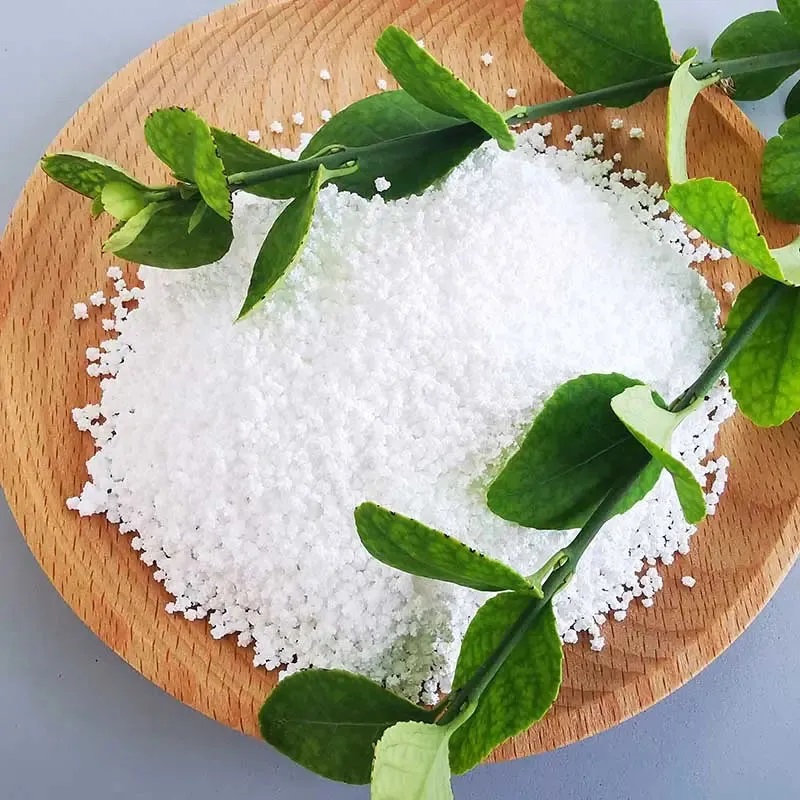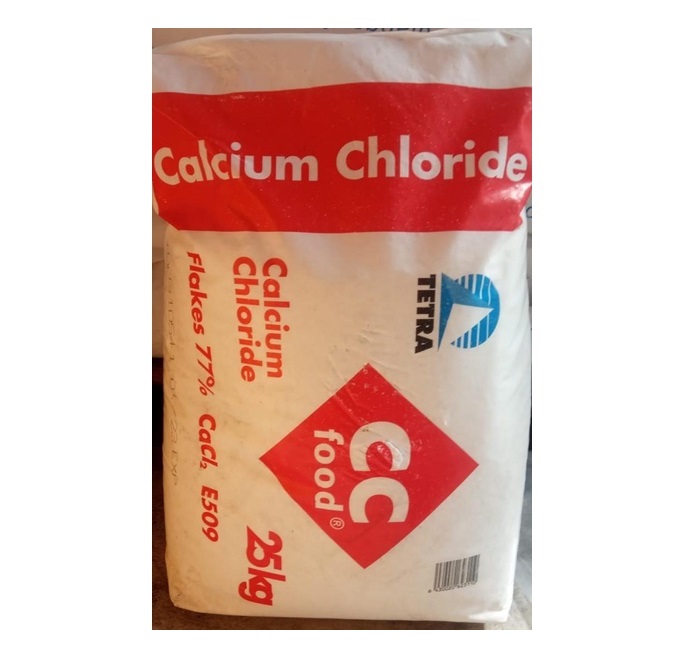We unleash your business potential by maximize the business innovation.
Send EmailE509, Calcium Chloride, SOLVAY Calcium Chloride (Food Grade), 10043-52-4, Calcium Chloride Dihydrate, Food Grade, Technic Grade, Liquid Calcium Chloride, 10035-04-8
The chemical compound with the CAS number 10043-52-4 is calcium chloride. Here are some details about it:
-
Chemical Names:
-
Calcium chloride
-
Calcium dichloride
-
-
Physical Properties:
-
Appearance: White, crystalline solid
-
Melting Point: 772°C
-
Boiling Point: 1,935°C
-
Density: 2.15 g/cm³
-
Solubility: Highly soluble in water
-
-
Chemical Properties:
-
Hygroscopic: Absorbs moisture from the air
-
Reactivity: Reacts with water to release heat
-
-
Uses:
-
De-icing: Used to melt ice and snow on roads
-
Food Industry: Used as a food additive (E509)
-
Construction: Used as a setting accelerator in concrete and mortar
-
Chemical Industry: Used as a desiccant and drying agent
-
Agriculture: Used as a soil conditioner and plant nutrient
-
Calcium chloride is a versatile compound with many industrial and commercial applications
Calcium chloride dihydrate (CaCl₂·2H₂O) is a hydrate form of calcium chloride. Here are some additional details about it:
-
Chemical Names:
-
Calcium chloride dihydrate
-
Calcium dichloride dihydrate
-
-
Physical Properties:
-
Appearance: White crystalline solid
-
Density: 1.85 g/cm³ at 20°C
-
Melting Point: 176°C
-
Solubility: Highly soluble in water (1280 g/L at 20°C)
-
-
Chemical Properties:
-
Hygroscopic: Absorbs moisture from the air
-
Reactivity: Reacts with water to release heat
-
-
Uses:
-
De-icing: Used to melt ice and snow on roads
-
Food Industry: Used as a food additive (E509)
-
Construction: Used as a setting accelerator in concrete and mortar
-
Chemical Industry: Used as a desiccant and drying agent
-
Agriculture: Used as a soil conditioner and plant nutrient
-
-
Safety Information:
-
Hazard Statements: Causes serious eye irritation (H319)
-
Precautionary Statements: Wear eye protection/face protection (P280), rinse cautiously with water if in eyes (P305 + P351 + P338)
-
Calcium Chloride (CaCl2) is a salt composed of calcium and chloride atoms. A white, crystalline solid, calcium chloride is hygroscopic and readily soluble in water.
Calcium Chloride Dihydrate
Descriptive Information
SOLVAY Calcium Chloride (E509, Food Grade)
Calcium Chloride (CaCl2) is a salt composed of calcium and chloride atoms. A white, crystalline solid, calcium chloride is hygroscopic and readily soluble in water.
Calcium Chloride Dihydrate Identifier Information
CAS Number : 10035-04-8
E-Code (Food) : E509
ChemSpider : 23237
EC Number : 233-140-8
PubChem ID : 24854
Calcium Chloride Dihydrate Physical and Chemical Properties:
Chemical Formula : CaCl2.2H2O
Molar Mass : 147.01 g/mol
Appearance : White hygroscopic powder
Odor : Odorless
Density : 11.85 g/cm3 (dihydrate)
Melting Point : 175°C (347°F; 448°K) dihydrate
Boiling Point : 1.935°C (3.515°F; 2.208 K) anhydrous
Solubility in water : 134.5 g/100 mL (60 °C) / 152.4 g/100 mL (100 °C)
Solubility : Ethanol (25.8 g/100 g (20 °C) / Methanol (29.2 g/100 g (20 °C) / Acetone 0.1 g/kg (20 °C))
Acidity : 8–9 (anhydrous)
Viscosity : 3.34 cP (787 °C)
Calcium Chloride Dihydrate Areas of Use:
Calcium chloride is a very useful chemical. A white, crystalline solid, calcium chloride attracts moisture.
Calcium chloride has many different areas of use. Some of the important areas of use are:
As a road de-icer in winter It is used. It has a low melting point and keeps the water on the roads liquid even in freezing temperatures. This provides a safer environment to get on the road and be in traffic.
It is used as an antifreeze in industrial cooling systems. It increases the efficiency and durability of the systems by preventing the cooling liquids from freezing. This reduces costs and prevents system failures.
It is used as a sedimentation agent in wastewater treatment plants. It provides purification of water by sedimenting the solid substances in the wastewater. This increases the quality of the water and protects the environment.
It is used as an additive in the production of plastic, rubber and glass. It increases the hardness, durability and other properties of the products. This increases the performance and life of the products.
It is used as an additive in the food industry. It is used to improve the consistency and flavor of cheese, ice cream and other food products. This increases the quality of the products and increases consumer satisfaction.
It is used as a fertilizer in plant cultivation. It provides the calcium and chloride elements necessary for the growth and development of plants. This increases the yield and quality of the plants.
It is used as an additive in fire extinguishers. It increases the effectiveness and efficiency of fire extinguishers, which helps extinguish fires faster and safer.
.jpg)


